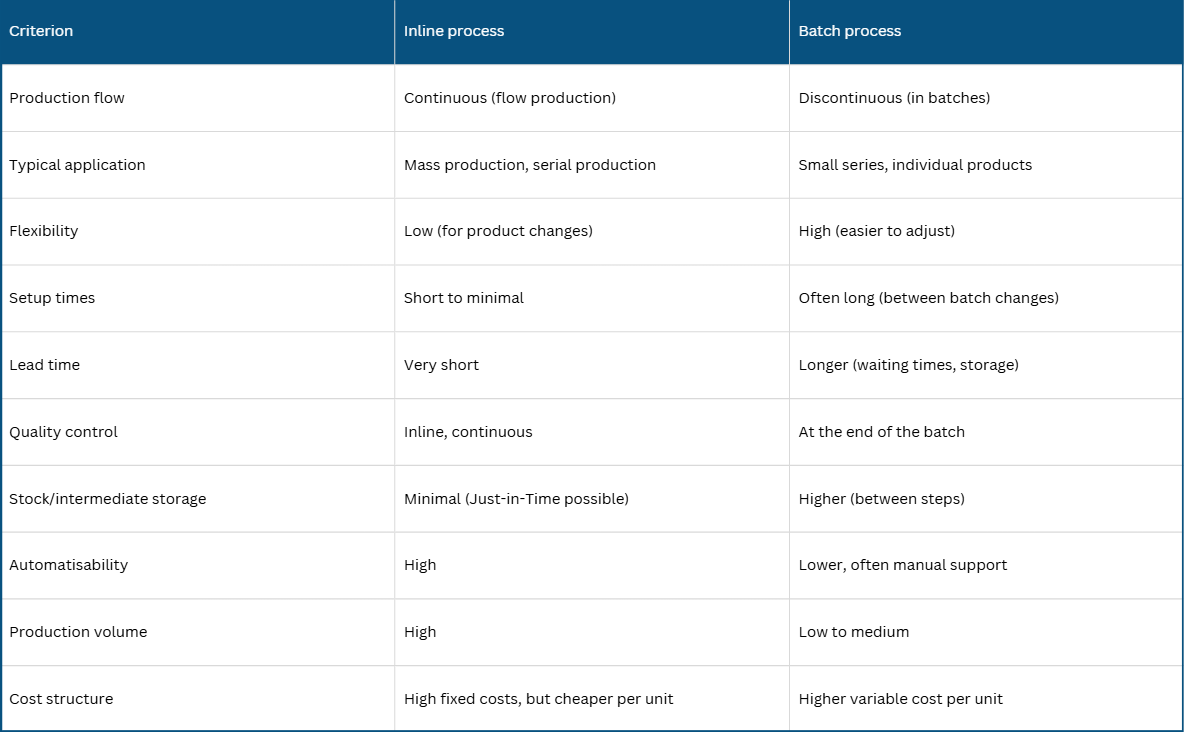
We mix, foam, and dose your media in a single production step. This resource-saving process is made possible by the inline method.
An inline production process (also known as “flow production”) and a batch process (also known as “batch production”) differ fundamentally in their organization and application. Compared to the batch process, the inline process offers several advantages, especially in terms of efficiency and quality.
The precision of the inline process makes it possible to mix and/or foam dosable media according to a precise recipe in a single step. The media can have different viscosities, from gaseous to liquid or solid.
Here are the most important advantages of an inline production process over a batch process:
✅ 1. Higher efficiency and speed
Products move directly from one production step to the next without long waiting times.
Less intermediate storage and shorter production time per unit.
✅ 2. Lower storage costs
Fewer warehouses needed, since materials are continuously processed.
Reduced stock of semi-finished products.
✅ 3. Better process control
Real-time monitoring of production is possible.
Errors can be detected and fixed faster. Quality control can happen inline (e.g., with sensors or camera systems).
✅ 4. Continuous material flow
Material is constantly fed and processed → avoiding idle times. Well-suited for mass production with high output.
✅ 5. Automation potential
Inline processes are easier to automate than batch processes. Machines can be precisely aligned with each other.
✅ 6. Reduced lead time
Since there are no waiting times between steps, the total time from raw material to finished product is shorter.
✅ 7. Fewer manual interventions
Automated processes need less staff and reduce the risk of human error.


Whether it’s for thermal insulation, mattresses or marshmallow mass, the foam technology sets the quality for many modern products. Foam generators from Hansa Mixer promptly ensure every desired type of foam – optimal foaming for a wide range of applications in the production of food and non-food products.
Foam generators for mechanical foams: Artificially produced substances with a cell structure and lower density. Almost all liquids are suitable for foaming.
Foam generators for unstable (or collapsing) foams: Mainly foams used in the non-food sector, which decompose immediately after application. The goal is to make the mostly chemical substances extremely light so that they can be metered precisely.
Foam generators for metastable foams: Initially, stable foams that only collapse by means of an activator such as heat or cold.
Foam generators for stable foams: Perfect for simplifying many things in life. This can include making baked goods and confectionery softer and creamier. However, it can also include soft latex mattresses and seals, which always return to their original shape after use thanks to foaming.
Food: For example, in the aeration of marshmallow products, baked goods, milk products, cheese products, toffees, soft caramel, chocolate bar fillings, etc.
Non-food: For example, in the foaming of textile coatings, impregnations, mattresses and pillows, carpets, PVC coatings, artificial grass, paper industry, construction industry, technical textiles, synthetic leather, leather, etc.